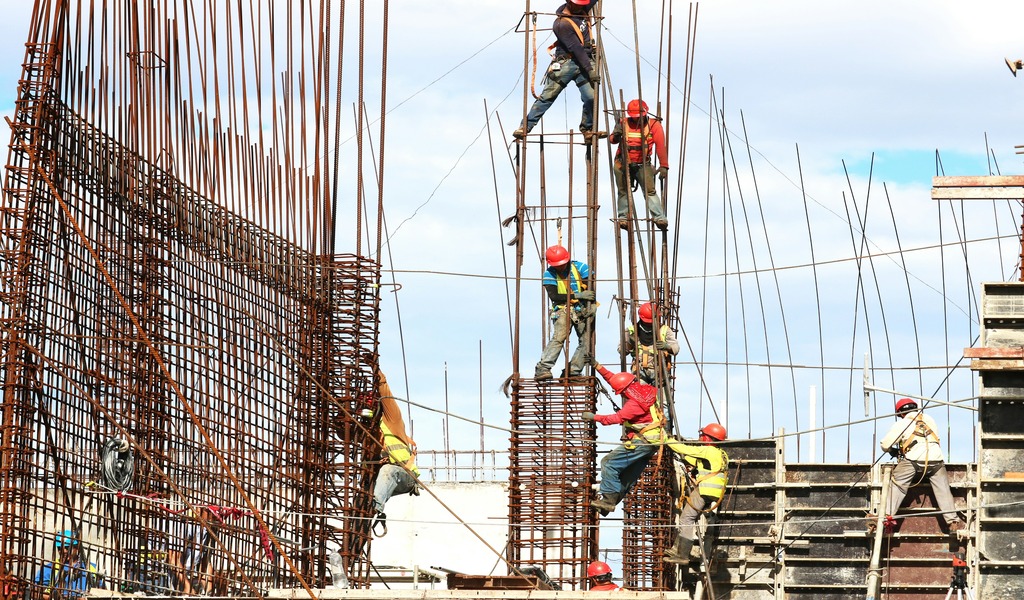Construction sites are among the most hazardous workplaces. Workers face risks from heavy machinery, heights, electrical systems, and other dangers. Without proper safety measures, accidents can lead to severe injuries or fatalities. Implementing construction site safety rules helps protect workers and ensures compliance with workplace safety guidelines. This guide covers essential safety rules to prevent accidents and create a safer work environment.
1. Always Wear Proper Safety Gear
Personal Protective Equipment (PPE) is the first line of defense against injuries. Every worker must wear appropriate safety gear, including:
- Hard hats to protect against falling objects
- High-visibility vests for visibility in busy areas
- Steel-toe boots to shield feet from heavy materials
- Safety goggles and gloves for eye and hand protection
- Harnesses for those working at heights Following OSHA safety regulations for PPE ensures workers stay safe and avoid injuries.
2. Conduct Regular Safety Training
Safety training is crucial for accident prevention in construction. Workers must understand potential hazards and how to avoid them. Training sessions should cover:
- Proper equipment usage
- Emergency response procedures
- Safe handling of hazardous materials
- Fall protection techniques Regular training ensures workers stay updated on safety standards and reduces the risk of accidents.
3. Maintain a Clean and Organized Site
A cluttered construction site increases the chances of accidents. Keeping the work area clean and organized helps prevent slips, trips, and falls. Follow these simple steps:
- Store tools and materials properly after use
- Remove debris and waste regularly
- Keep walkways clear and marked
- Use proper storage for hazardous substances A well-organized site reduces risks and enhances productivity.
4. Use Proper Signage and Warnings
Safety signs play a vital role in preventing accidents. Workers should be able to identify and understand warning signs for:
- High voltage areas
- Slippery floors
- Falling object zones
- Restricted access areas Proper placement and maintenance of safety signs ensure that workers and visitors remain aware of potential dangers.
5. Inspect Tools and Equipment Regularly
Faulty tools and machinery can cause serious injuries. Before using any equipment, workers should:
- Check for damages or malfunctions
- Ensure proper lubrication and maintenance
- Follow manufacturer guidelines for safe operation
- Report any defective equipment immediately Regular inspections help prevent unexpected failures and accidents.
6. Follow the Site Safety Checklist
A site safety checklist ensures all essential precautions are in place. Some critical elements include:
- Proper use of PPE
- Inspection of scaffolding and ladders
- Fire safety measures
- Emergency response preparedness Using a checklist helps supervisors and workers maintain a high standard of safety at all times.
7. Secure All Elevated Work Areas
Falls from heights are one of the leading causes of construction-related injuries. To prevent such accidents:
- Use guardrails and toe boards on elevated surfaces
- Ensure scaffolding meets OSHA safety regulations
- Provide harnesses and safety nets for workers
- Train workers on ladder safety Securing elevated work areas reduces the risk of falls and serious injuries.
8. Prevent Electrical Hazards
Construction sites often involve electrical work, increasing the risk of electrocution. Workers should follow these safety measures:
- Turn off power before working on electrical systems
- Use insulated tools and equipment
- Keep electrical cords away from wet areas
- Report damaged wires or outlets immediately Proper handling of electrical equipment prevents severe accidents.
9. Promote Clear Communication Among Workers
Miscommunication can lead to accidents and delays. Workers should:
- Use radios or intercoms for instant communication
- Learn standard hand signals for crane and heavy equipment operations
- Conduct daily safety briefings before work begins
- Encourage open communication about potential hazards Effective communication ensures everyone remains informed and alert.
10. Plan for Emergency Situations
Accidents can happen despite all precautions. A strong emergency response plan is essential for construction risk management. The plan should include:
- Fire evacuation procedures
- First aid stations and trained personnel
- Emergency contact numbers are displayed clearly
- Regular drills to prepare workers for unexpected situations Being prepared can save lives and minimize injuries in case of an emergency.
Conclusion
Following Tips for Building Construction Site safety rules protects workers and prevents accidents. Workers must wear proper safety gear, undergo regular training, and follow workplace safety guidelines. Simple steps like maintaining a clean site, securing elevated areas, and ensuring adequate communication can make a significant difference. By implementing these safety measures, construction companies can create a safer work environment and reduce the risks associated with construction work.

